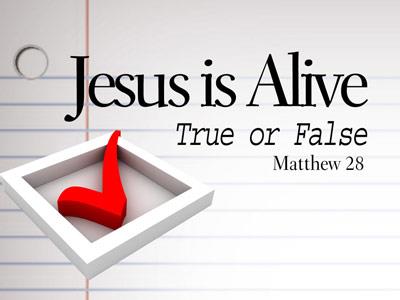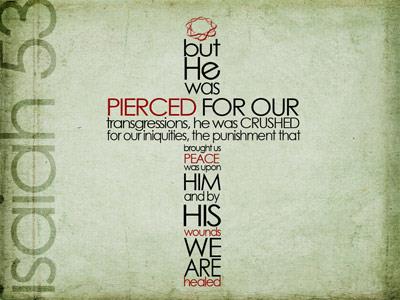-
The Tragedy And The Triumph
Contributed by David Dewitt on Nov 28, 2017 (message contributor)
Summary: The grave of Jesus gave way to the triumph of the resurrection
The Tragedy and the Triumph
John 20:1-10
March 27, 2005
Easter Sunday
Introduction
This past Friday the church celebrated Good Friday with a showing of the Passion of the Christ. Many of you have seen the movie and experienced the powerful images that Mel Gibson used to convey the suffering of Jesus. I believe the movie gives us a very real glimpse at the price Jesus paid for our sins and the depth of His love and mercy for us.
The movie is without a doubt filled with unforgettable images of those last few hours of Christ’s life. Who could forget Jesus praying in the garden of Gethsemane or the image of Jesus being brutally beaten at the scourging post. Who could forget the sight of Jesus embracing His cross as they led Him out toward Golgatha or the portrayal of Jesus forgiving those who crucified Him.
There is one more scene in the movie that made an incredible impact on me but it is not a scene of suffering. As the Passion closes, the final scene shows the grave clothes of Jesus.
Grave clothes were a sign of the end. They were a sign that hope was no longer an option. They were a symbol that death was once again victorious. The burial of Jesus was rather complex in its workings. Pilate had to give permission for His body to be taken. Joseph of Arimathea had to allow for the use of his own personal tomb. Nicodemus had to bring the spices and the women who had followed Jesus were there to help bury Him.
It is an image of tragedy. It is an image of truth. It is an image of triumph. Here is the closing scene of the Passion of the Christ.
Open your Bibles with me to John 20:1-10
1 Early on the first day of the week, while it was still dark, Mary Magdalene went to the tomb and saw that the stone had been removed from the entrance. 2 So she came running to Simon Peter and the other disciple, the one Jesus loved, and said, "They have taken the Lord out of the tomb, and we don’t know where they have put him!" 3 So Peter and the other disciple started for the tomb. 4 Both were running, but the other disciple outran Peter and reached the tomb first. 5 He bent over and looked in at the strips of linen lying there but did not go in. 6 Then Simon Peter, who was behind him, arrived and went into the tomb. He saw the strips of linen lying there, 7 as well as the burial cloth that had been around Jesus’ head. The cloth was folded up by itself, separate from the linen. 8 Finally the other disciple, who had reached the tomb first, also went inside. He saw and believed. 9 (They still did not understand from Scripture that Jesus had to rise from the dead.) 10 Then the disciples went back to their homes,
I. Mary saw the grave clothes as a tragedy
Mary had seen more than her fair share of tragedy during the previous few days and her task that first Easter morning was a grim reminder of it. It was early, before daybreak and Mary Magdalene was headed for a place she would rather not be going to.
Mary was going out to the place where they had buried Jesus just a few days before. She was going to perform a gruesome task. The burial of Jesus had been rushed because of the approaching sabbath at night fall. The anointing of Jesus’ body had not been finished and now Mary was going out to complete the task. It was something she had prepared herself for but as she neared the tomb something was wrong. The stone had been rolled away and the body of Jesus was gone.
This seemed to be just one more tragedy to add to the growing list for Mary.
• Mary had watched as Jesus was given a mockery of a trial
• Mary had watched as Jesus was flogged by Roman soldiers
• Mary had watched as Jesus was led away to be crucified
• Mary had watched as Jesus was nailed to the cross
• Mary had watched as the soldier rammed the spear into Jesus side
• Mary had helped as Jesus was buried
• Mary had watched as the stone was rolled into place
Mary sees the tomb open and then runs to tell Peter and John. As she reaches them notice the words that she uses to describe what has happened. "They have taken the Lord out of the tomb, and we don’t know where they have put him!" The words ooze with tragedy. They hang in the air and reveal the depth of her pain. These words show the reality of tragic events continuing to unfold. Mary saw the grave clothes as a tragedy that left her with a broken heart.

 Sermon Central
Sermon Central



